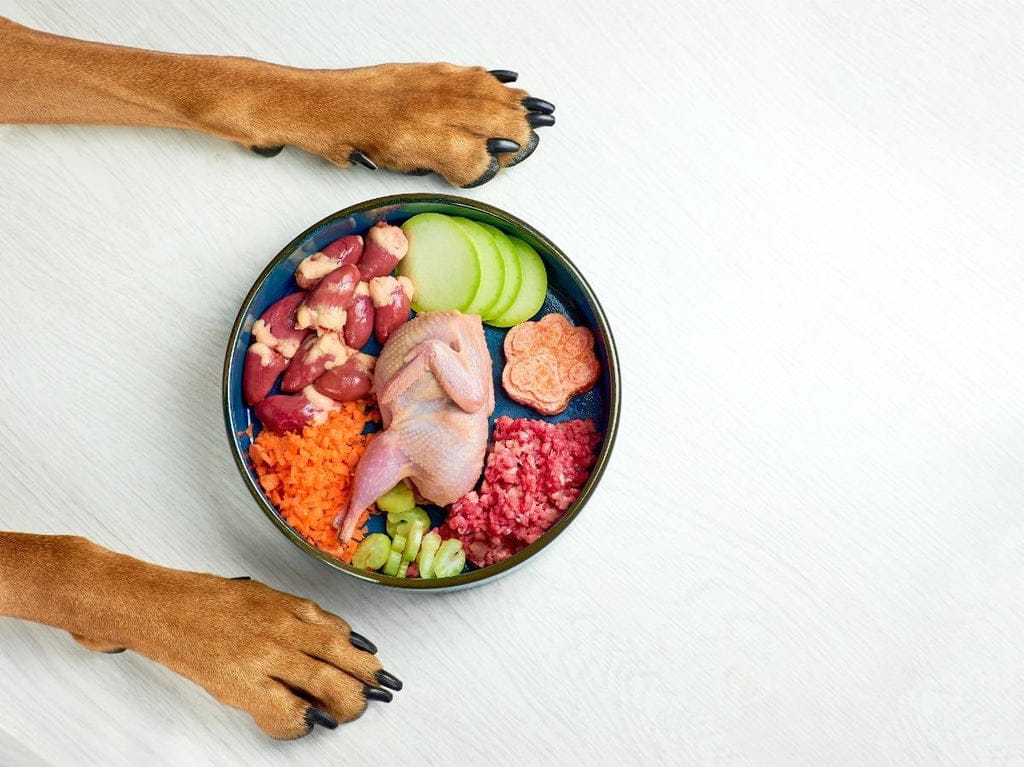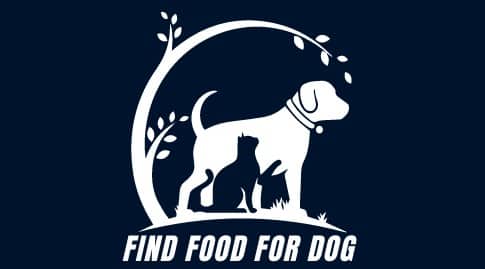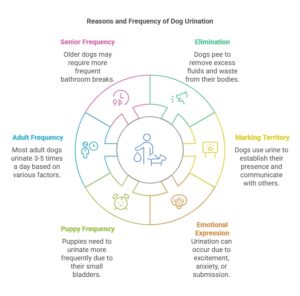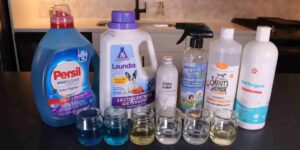Feeding your dog a home-prepared diet can be a rewarding way to ensure their nutrition is tailored to their unique needs. However, creating a balanced and nutritious diet at home requires careful planning to avoid deficiencies or excesses that could harm your pet. This guide will walk you through essential home-prepared dog food guidelines and answer some frequently asked questions to help you get started.
Table of Contents
ToggleWhy Prepare Dog Food at Home?

- Customization: Tailor the diet to your dog’s specific health needs, preferences, and allergies.
- Fresh Ingredients: Control the quality and freshness of the ingredients.
- Avoid Additives: Eliminate artificial preservatives, flavors, and colors found in some commercial dog foods.
- Bonding: Preparing food for your pet can strengthen your bond and show care.
Key Guidelines for Home-Prepared Dog Food
1. Consult a Veterinarian or Pet Nutritionist
Before switching to home-prepared meals, consult a veterinarian or a certified pet nutritionist. They can help design a diet tailored to your dog's age, size, breed, activity level, and health conditions.
2. Balance is Critical
Dogs require a balance of six essential nutrients:
- Proteins: Provide amino acids for growth and repair. Examples: lean meats, eggs, fish.
- Carbohydrates: Supply energy. Examples: brown rice, oats, sweet potatoes.
- Fats: Essential for energy and a healthy coat. Examples: fish oil, chicken fat.
- Vitamins: Support metabolic processes. Add vegetables like spinach or carrots.
- Minerals: Maintain bone health and enzyme functions. Include sources like bone meal or supplements.
- Water: Always provide fresh water alongside meals.
3. Use High-Quality Ingredients
Choose fresh, unprocessed, and human-grade ingredients. Avoid low-quality meats, spoiled food, or ingredients that may contain harmful preservatives.
4. Avoid Toxic Foods
Some foods are toxic to dogs and should never be included:
- Chocolate
- Grapes and raisins
- Onions and garlic
- Avocado
- Macadamia nuts
- Alcohol
5. Include Supplements When Necessary
Certain vitamins and minerals may be lacking in a home-prepared diet. Common supplements include calcium (if no bones are provided), omega-3 fatty acids, and a general multivitamin designed for dogs.
6. Portion Control
Overfeeding or underfeeding can lead to obesity or malnutrition. Your dog’s daily caloric needs depend on factors like their weight, age, and activity level. Use calorie calculators or consult a professional to determine appropriate portion sizes.
7. Prepare Meals Safely
- Cook Proteins Thoroughly: Raw food diets are debated; if you prefer cooked meals, ensure all meats are fully cooked to kill pathogens.
- Wash Vegetables: Remove pesticides and dirt from produce.
- Store Food Properly: Use airtight containers and refrigerate or freeze portions to maintain freshness.
8. Introduce New Diet Gradually
Switching diets suddenly can upset your dog’s stomach. Introduce the new diet over 7-10 days, mixing it with their current food and gradually increasing the proportion of home-prepared food.
Sample Recipe for Balanced Home-Prepared Dog Food

Ingredients:
- 1 cup cooked brown rice
- 1 cup cooked lean ground turkey
- 1/2 cup steamed carrots
- 1/2 cup steamed spinach
- 1 teaspoon fish oil
- 1/4 teaspoon calcium supplement (or ground eggshell)
Instructions:
- Cook the rice and ground turkey separately.
- Steam the vegetables until tender.
- Mix all ingredients together, ensuring even distribution of the fish oil and calcium supplement.
- Let the meal cool before serving to your dog.
This recipe is a starting point. Adjust portions and ingredients based on your dog’s needs and preferences.
Frequently Asked Questions
1. Can I feed my dog homemade food every day?
Yes, but it must be nutritionally complete and balanced. Long-term feeding of an imbalanced diet can lead to health problems.
2. Do dogs need supplements on a homemade diet?
In most cases, yes. Homemade diets may lack specific nutrients, so supplements like calcium, omega-3 fatty acids, or multivitamins may be necessary.
3. Is raw food safe for dogs?
Raw diets are controversial. While some advocate for their benefits, raw food can contain harmful bacteria like Salmonella or E. coli. Consult your veterinarian before starting a raw diet.
4. How can I tell if my dog’s homemade diet is working?
Look for signs of good health: a shiny coat, regular bowel movements, healthy weight, and high energy levels. If you notice any issues, consult a veterinarian.
5. How do I store homemade dog food?
Refrigerate portions you’ll use within 3-4 days and freeze the rest. Always thaw frozen food in the refrigerator to avoid bacterial growth.
6. Are there any risks with home-prepared diets?
The main risk is creating an imbalanced diet that leads to deficiencies or excesses. Regular consultations with a pet nutritionist can mitigate this risk.
Conclusion
Preparing food at home for your dog can be a fulfilling experience and a step toward their overall health. However, it requires diligence, planning, and professional guidance to ensure your pet receives all the nutrients they need. By following these guidelines and consulting experts, you can provide a diet that keeps your furry friend happy and healthy.














